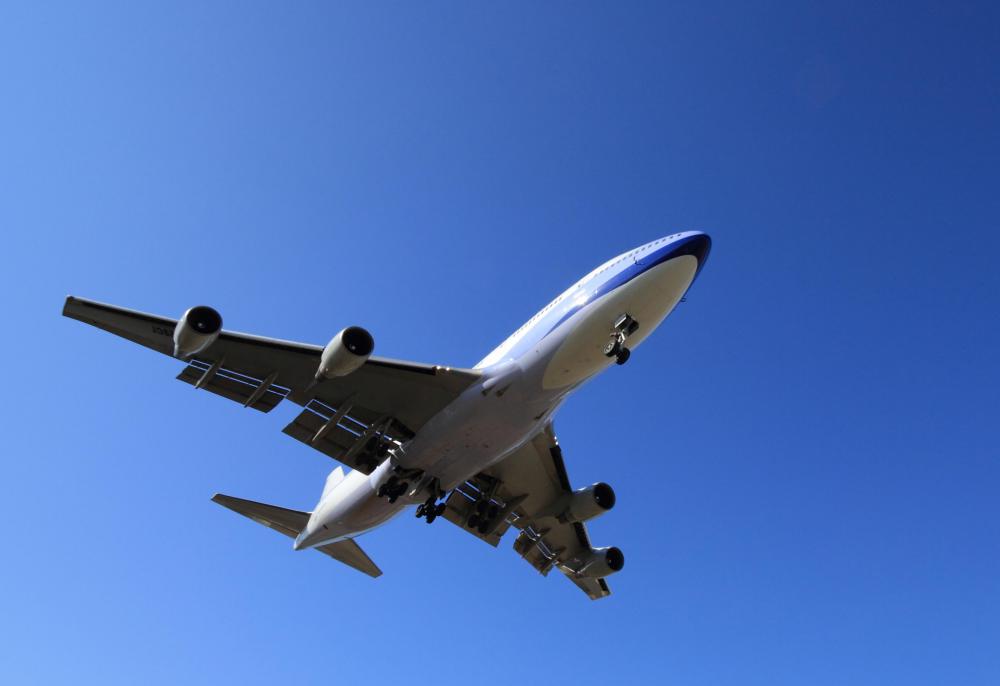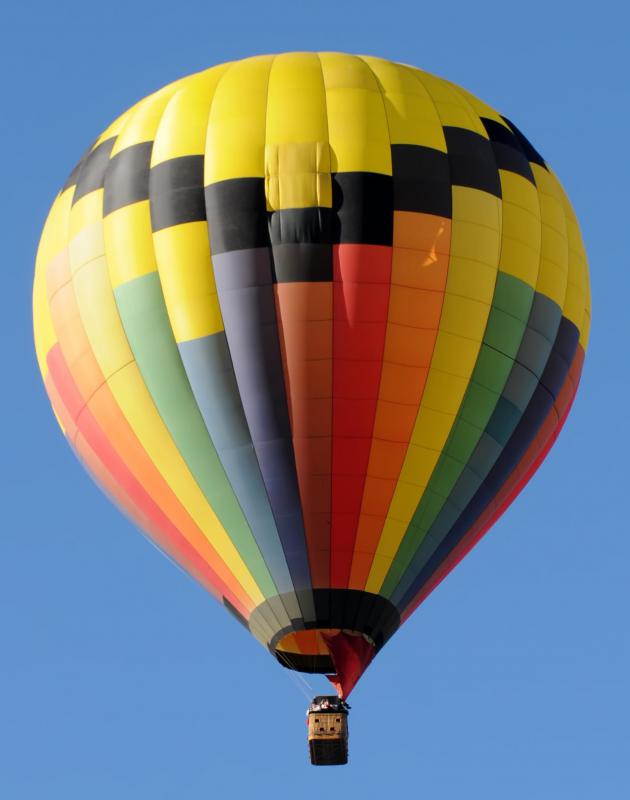At WiseGEEK, we're committed to delivering accurate, trustworthy information. Our expert-authored content is rigorously fact-checked and sourced from credible authorities. Discover how we uphold the highest standards in providing you with reliable knowledge.
What is the History of Aviation?
The history of aviation begins in 600 BCE or earlier in China, where people flew attached to large kites (as punishment). In the 5th century BCE, the inventor Lu Ban invented a “wooden bird,” the specifics of which were unknown, though it could have been a large kite or early glider. Hot air balloons with on-board lanterns were constructed in the 3rd century BCE in China, and were used to scare the enemy during battle. Human flight in a kite was again recorded as occurring in 559.
Many centuries later, in the 9th century, the Islamic polymath and inventor Abbas Ibn Firnas demonstrated the first known gliders and invented an early parachute, which allowed him to survive a 50-foot fall with only minor injuries. The Italian genius Leonardo da Vinci made various designs for flying machines and aviation, including an ornithopter (wing-flapping flight machine), but they were never built. It wasn’t until 1783 that the first milestone in modern aviation, true flying machine, a hot-air balloon, was constructed by the Montgolfier brothers and flown by Jean-Francois Pilatre de Rozier and Francois Laurent d’Arclandes over a course of 5 miles (8 km). Powered by a wood fire, this early balloon had no steering mechanism.

In the late 18th century, aviation in hot air balloons was all the rage in Europe, and work was started on making a steerable hot air balloon. This was achieved in 1852 by Henri Giffard using a steam engine driven craft that flew 15 miles (24 km) in a semi-controlled fashion. In the 1860s, non-steerable mined balloons were used for the first time in war, during the American Civil War, by the Union Army Balloon Corps. In 1884, the first completely controllable airship was constructed, also one of the first truly large airships, 170 feet (52 m) in length, with 66,000 cubic feet (1,900 cu m) of air. This balloon, named La France, was owned by the French Army and covered 5 miles (87 km) in its maiden flight with the assistance of a 8-1/2 horsepower electric motor.

The 19th century saw the exploration of the physics of flight and the construction of progressively 14start of modern heavier-than-air aviation. The first heavier-than-air flight occurred in Fairfield, Connecticut, by Gustave Whitehead, on 14 August 1901. This engine-powered, 800 meter-long, 15 meter-altitude flight predated the Wright Brothers’ historic flight by more than two years, and represents the actual historic milestone.

After the development of heavier-than-air planes in 1901, aviation progressed continually and rapidly until the 1970s. In 1939, the first functional jet plane was flown by Erich Warsitz in Germany. The first practical helicopter was developed around the same time, in 1936, also in Germany. The sound barrier was broken in 1947 by Chuck Yeager in a rocket-powered Bell X-1, and the first commercial jetliner, the Avro C102 Jetliner, flew in 1949. Since then, progress in aviation has been somewhat slower, and much of the current focus in on removing the pilot and creating entirely autonomous craft, called UAVs (unmanned aerial vehicles).
AS FEATURED ON:
AS FEATURED ON:

















Discuss this Article
Post your comments